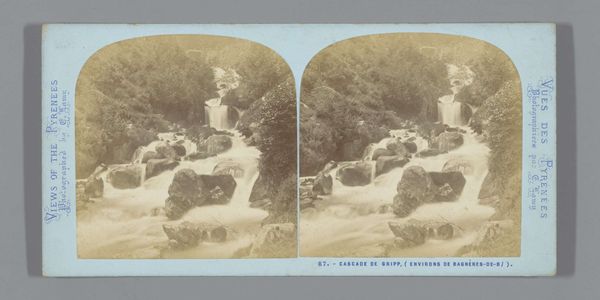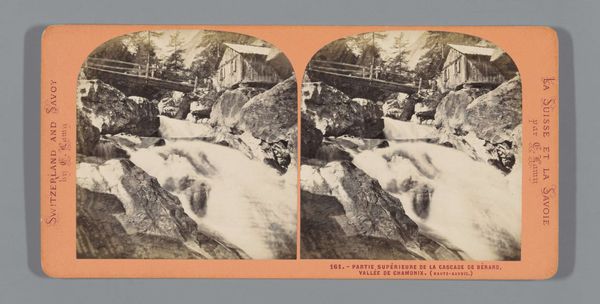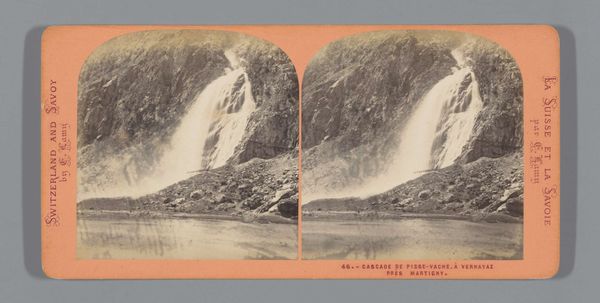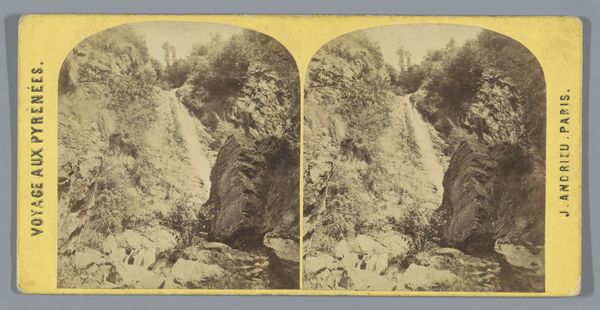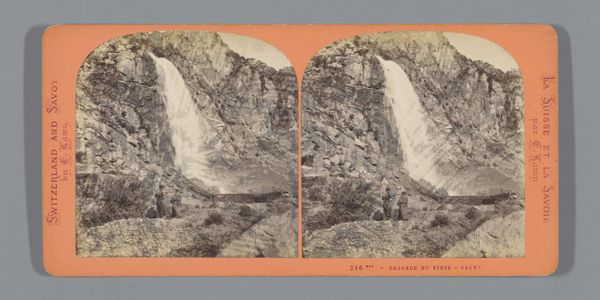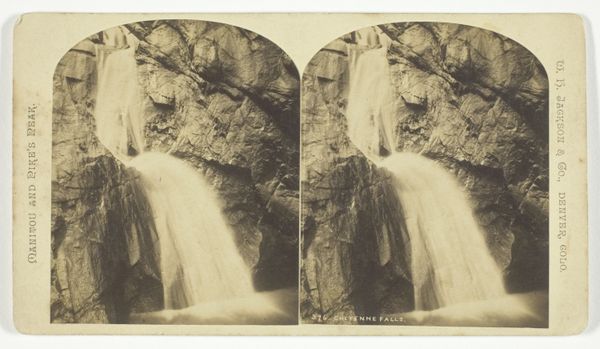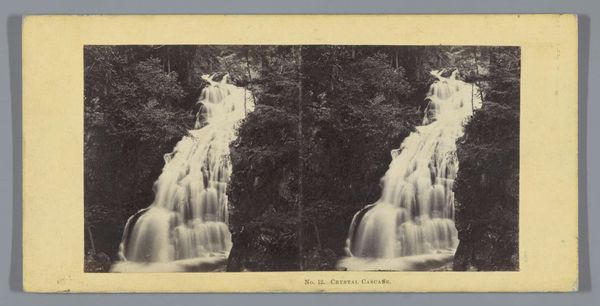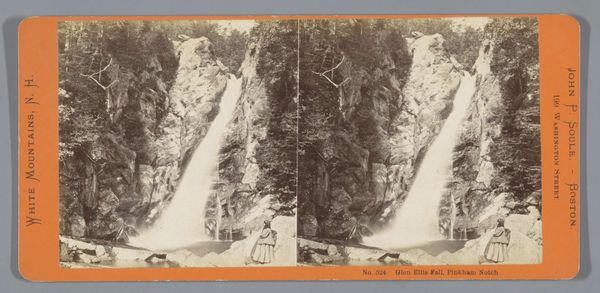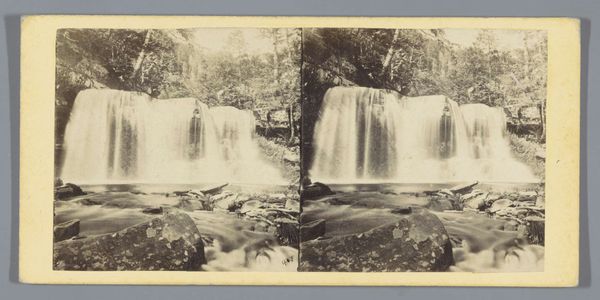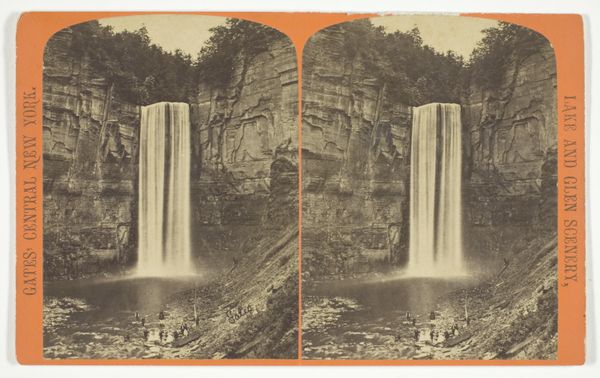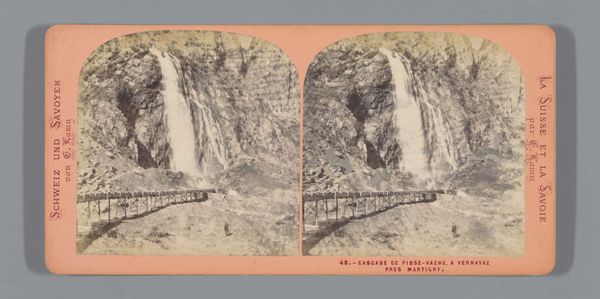
Dimensions: height 85 mm, width 170 mm
Copyright: Rijks Museum: Open Domain
Curator: Before us we have an arresting view captured by Ernest Eléonor Pierre Lamy around 1860-1880, titled “Pissevache-waterval,” a gelatin-silver print of a Swiss waterfall. Editor: It’s stark. The contrast is really intense, almost bleached in the waterfall area itself. The photographer seems intent on capturing the waterfall as an overpowering force, a pure column dominating the visual field. Curator: The composition certainly funnels our gaze upward. The texture of the surrounding rocks, so meticulously rendered, contrasts with the smooth, almost ethereal quality of the cascading water. It is a pictorialist approach, concerned less with documentary realism and more with the art of the photograph itself. Note the dynamic arrangement, where shapes of lightness and darkness take hold of each other. Editor: Waterfalls often appear in folklore, don’t they? As liminal spaces. This image calls to mind the symbol of purification and the cleansing power of nature. The scale—insignificant humans appear near the base—emphasizes nature's supremacy. Curator: An interesting interpretation. I’d focus less on a reading through folk beliefs and instead turn to how the photograph creates its meaning through the strategic interplay of light and dark, line and texture. Lamy’s decision to frame the scene in this particular way transforms the actual waterfall into a statement on photographic possibility. Editor: Yet, doesn’t the very act of photographing a natural wonder, something already imbued with cultural meaning, ensure that the image taps into existing cultural symbols? Think of the romantic notions of the sublime, the awe-inspiring power of the natural world. Curator: Perhaps. But even those Romantic associations are filtered through a formal lens, where the aesthetic choices dictate how we experience that supposed sublimity. Look at how Lamy uses the horizon to frame the water; the balance is what strikes the eye. Editor: I concede that the composition enhances the dramatic impact. However, it's equally critical to see this image not merely as an arrangement of shapes, but as a potent emblem of transformation and the eternal flow of life. It’s both aesthetically captivating and deeply evocative. Curator: A fitting conclusion to our exploration of Lamy’s photographic study. Editor: Indeed. I found this photographic work visually arresting while offering an avenue into understanding humanity's relationship to landscape and our emotional reaction.
Comments
No comments
Be the first to comment and join the conversation on the ultimate creative platform.

